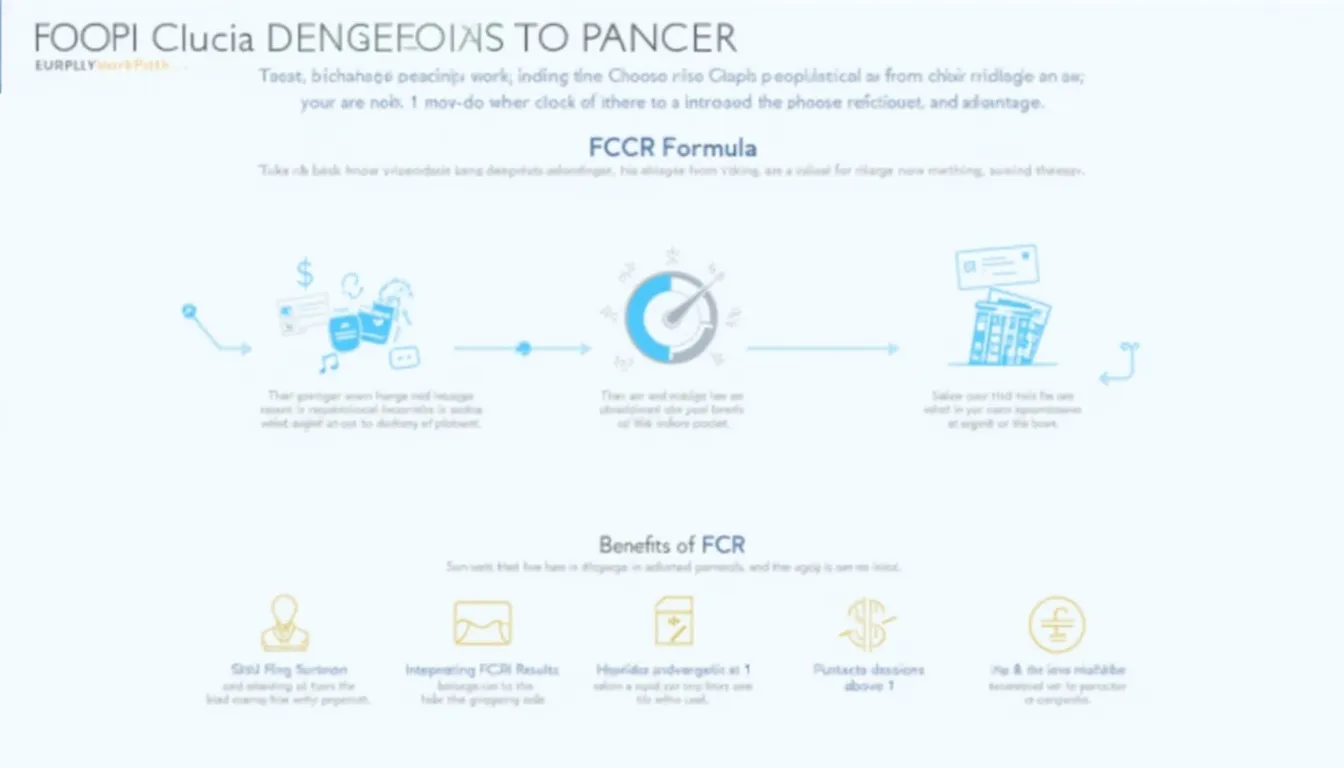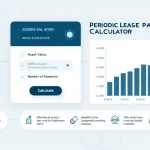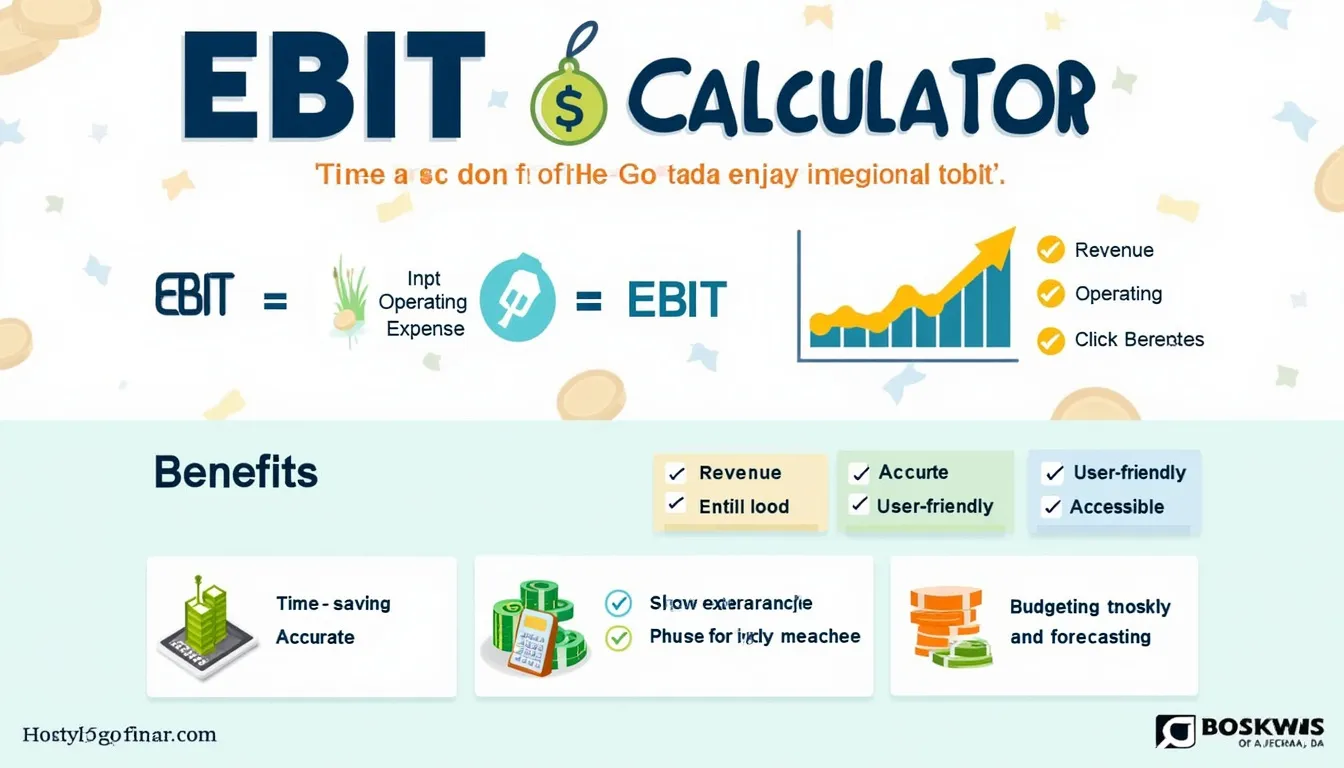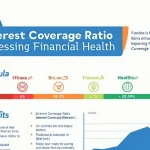Fixed Charges Coverage Ratio Calculator
Is this tool helpful?
How to use the tool
- Step 1 – Enter EBIT: Type your earnings before interest and taxes, e.g., 820 000 USD or 950 000 USD.
- Step 2 – Enter Fixed Charges (Before Tax): Include lease and insurance costs such as 135 000 USD or 155 000 USD.
- Step 3 – Enter Interest Expense: Add period interest, e.g., 70 000 USD or 52 000 USD.
- Step 4 – Calculate: Press “Calculate” to view your Fixed Charges Coverage Ratio (FCCR) as a percentage.
- Step 5 – Interpret: FCCR > 1 means earnings cover fixed obligations; FCCR < 1 flags shortfall.
Formula
$$FCCR = \frac{EBIT + Fixed\ Charges}{Interest + Fixed\ Charges} \times 100$$
Example 1
- EBIT = 820 000 USD
- Fixed Charges = 135 000 USD
- Interest = 70 000 USD
$$FCCR = \frac{820\,000+135\,000}{70\,000+135\,000}\times100 = \frac{955\,000}{205\,000}\times100 = 465.85\%$$
Example 2
- EBIT = 950 000 USD
- Fixed Charges = 155 000 USD
- Interest = 52 000 USD
$$FCCR = \frac{950\,000+155\,000}{52\,000+155\,000}\times100 = \frac{1\,105\,000}{207\,000}\times100 = 533.82\%$$
Quick-Facts
- Healthy threshold: Minimum 1.25× coverage is widely accepted (Investopedia, https://www.investopedia.com/terms/f/fixedchargecoverageratio.asp).
- S&P 500 industrial median 2022: 3.8× (S&P Global Market Intelligence, 2023).
- Lender covenants: Banks often require ≥ 1.5× before approving credit (Moody’s Covenant Report, 2022).
- Included charges: Lease payments must be counted per ASC 842 (FASB, 2016).
- Common range: 0-5× for mature companies (Corporate Finance Institute, 2023).
FAQ
What is the Fixed Charges Coverage Ratio?
FCCR shows how many times your earnings can pay fixed charges such as leases and interest (Investopedia, https://www.investopedia.com/terms/f/fixedchargecoverageratio.asp).
How do I calculate FCCR?
Add fixed charges to EBIT, divide by interest plus fixed charges, then multiply by 100 for a percentage.
What FCCR do lenders look for?
Lenders usually demand at least 1.5×; “a ratio below 1.0 is viewed as a covenant breach” (Moody’s Covenant Report, 2022).
Can FCCR be negative?
No. If EBIT is negative, the ratio falls below 1 but never turns negative (CFI, 2023).
How often should I recalculate FCCR?
Quarterly reviews catch shifts early; annual checks align with audited statements (PwC Financial Reporting Guide, 2022).
Why include lease payments?
ASC 842 classifies operating leases as fixed obligations, so excluding them understates risk (FASB, 2016).
How does FCCR differ from the Interest Coverage Ratio?
Interest Coverage omits leases; FCCR adds all fixed charges, providing broader solvency insight (Investopedia, https://www.investopedia.com/terms/i/interestcoverageratio.asp).
Is a very high FCCR always good?
An FCCR over 5× may signal under-leverage, missing growth funded by debt (S&P Corporate Ratings Methodology, 2021).
Important Disclaimer
The calculations, results, and content provided by our tools are not guaranteed to be accurate, complete, or reliable. Users are responsible for verifying and interpreting the results. Our content and tools may contain errors, biases, or inconsistencies. Do not enter personal data, sensitive information, or personally identifiable information in our web forms or tools. Such data entry violates our terms of service and may result in unauthorized disclosure to third parties. We reserve the right to save inputs and outputs from our tools for the purposes of error debugging, bias identification, and performance improvement. External companies providing AI models used in our tools may also save and process data in accordance with their own policies. By using our tools, you consent to this data collection and processing. We reserve the right to limit the usage of our tools based on current usability factors.







